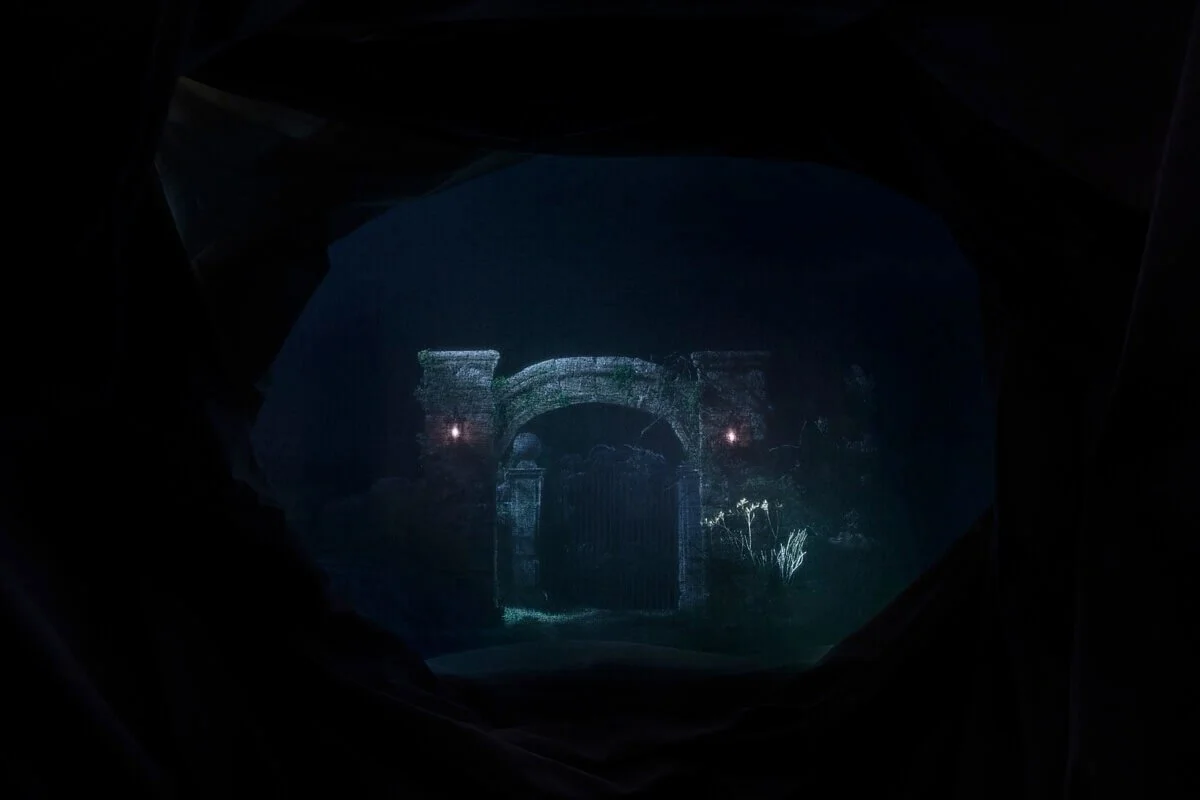Viola’s Room
New York, NY • Ongoing
If you’re the pioneering immersive theater company Punchdrunk and you’re returning to New York City for the first time since the closing of your long-running, paradigm-shattering Sleep No More, what do you do?
Do you try to outdo yourself, going even bigger and bolder in an attempt to eclipse the magic at the McKittrick? Or do you turn inward, and contemplate: what does it really mean to be immersed?
With Viola’s Room, the choice that Punchdrunk made is clear. Make no mistake: the visual production value of this new show (currently at the Shed through November 16th) is no lower than in their previous creations. But while Viola’s Room is pared back in scale compared to past Punchdrunk shows, it makes the most of its strengths for an impressively immersive experience.
Each showing of Viola’s Room accommodates only 6 people and lasts a little under an hour. Audience members are prompted to remove their shoes and socks before receiving a pair of headphones and proceeding to the titular room. The journey begins in a recreation of a teenage girl’s bedroom from the mid-90s, complete with Tori Amos posters, a canopy bed, and moody string lights. There, the audio component of the experience starts: a short story, read by Helena Bonham Carter and accompanied by music, which takes the place of live actors in defining the piece’s narrative. Participants are prompted to “follow the light” wherever it glows brightest, which leads them to crawl through a pillow fort and into a gothic fever dream.
Punchdrunk also goes to great lengths to not neglect the other senses that are so key to immersion. Audience members traverse tufted carpet, pillowy muslin padding, creaky wooden slats, and even fine sand, which give the sensation of traveling through time and space at an illogical pace. They’ll have to occasionally rush to keep up with the fickle light, squeeze through constrictive spaces, dodge gauzy nightgowns hanging from above, and freeze in place when the dark overtakes them. Different sections of the maze are infused with unique scents that further characterize them on a sensory level.
The story of Princess Viola—her orphaning, engagement, and descent into (apparent) madness through a consuming need to dance in the moonlight—is hauntingly voice-acted, something between a bedtime story and a Brothers Grimm-style fairytale. While evocative in its own right, the narrative serves mostly as a loose metaphorical scaffold that allows an engrossing sensory experience to unfold.
Sound is paramount: as the main vehicle for the story, the audio is fine-tuned from moment to moment to evoke scenes of gentleness, merriment, desperation, and fear. On a visual level, Viola’s Room plays skillfully with light and scale. The audience starts out following shadow plays on simple miniatures, but before long must chase the all-important light through life-size sets of those same environments—and, on occasion, be plunged into complete darkness.
What Viola’s Room lacks in interactivity—there’s only one way forward, and not much time to explore—and live actors, it makes up for by leaning into its conceit to the fullest. It’s a story about chasing something that’s fleeting, whether it’s childhood innocence or intoxicating moonlight, and it does well to have you following in the dancing footsteps of a now-absent Viola. With it, Punchdrunk demonstrates that they don’t need the most elaborate trappings to make a compelling narrative—all they need is their creativity and expertise in telling stories to the body.
Details
Status
Now Showing
Location
545 W 30th St, New York, NY 10001
Published : November 4, 2025
Sources : Punchdrunk





